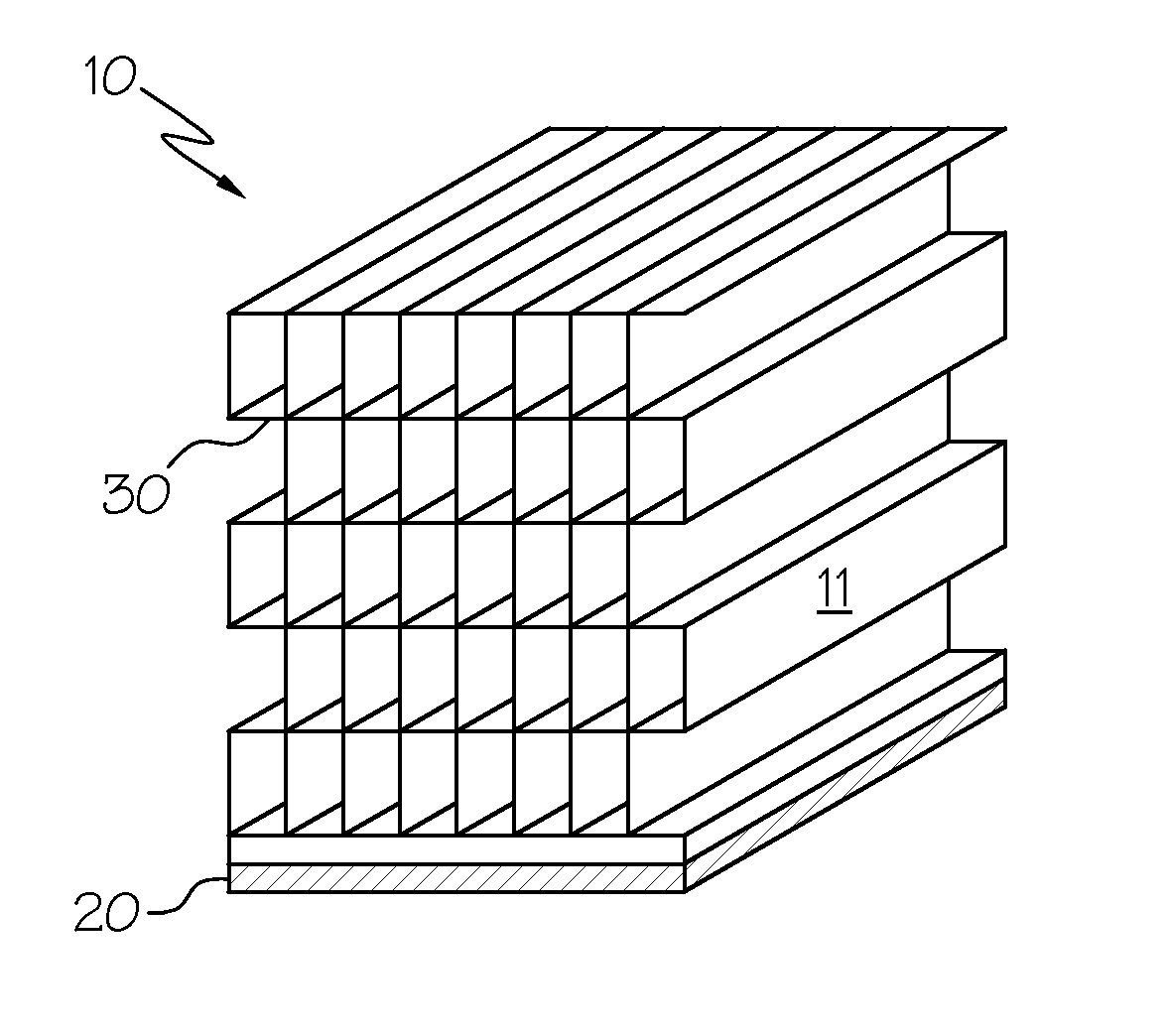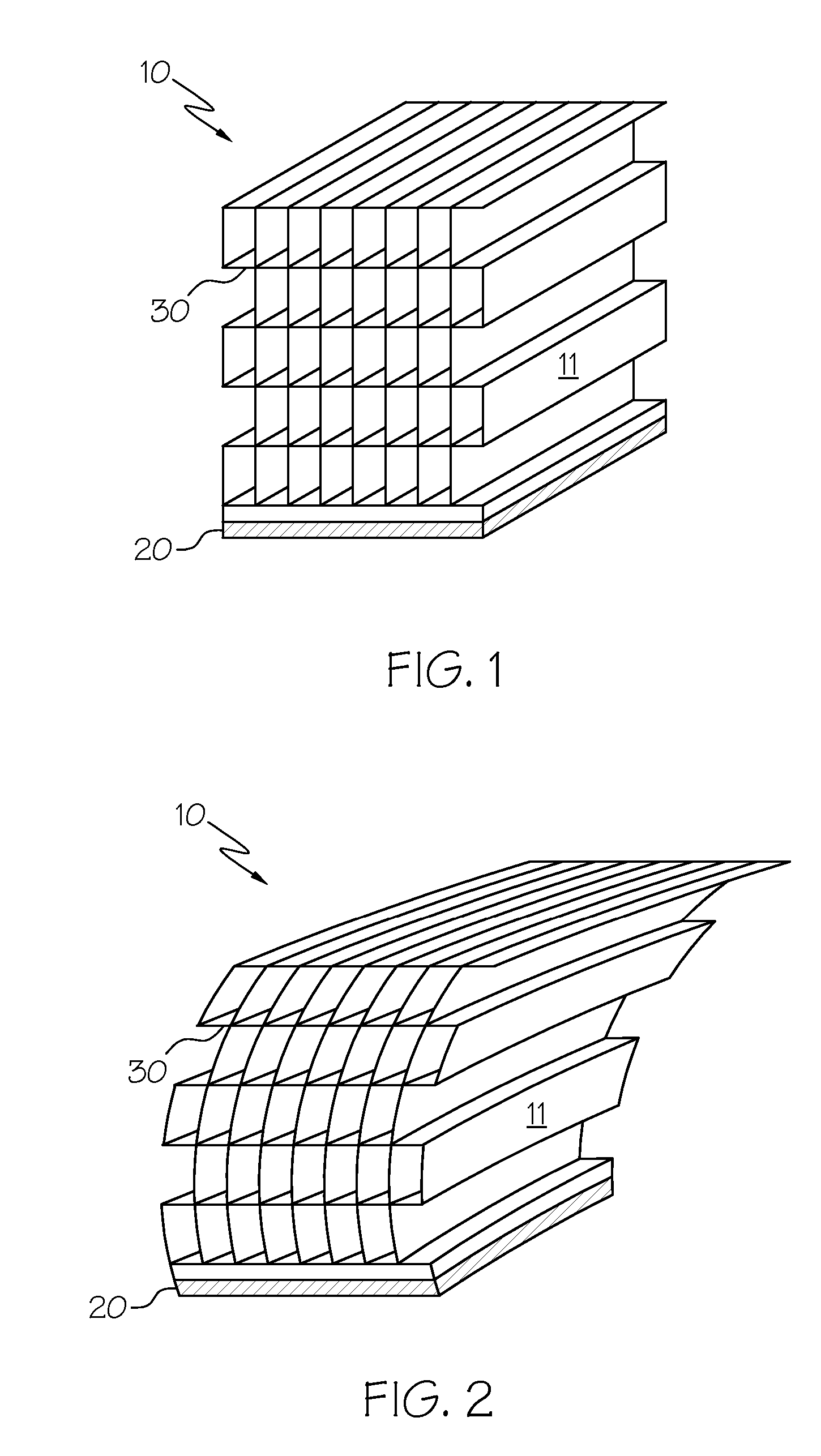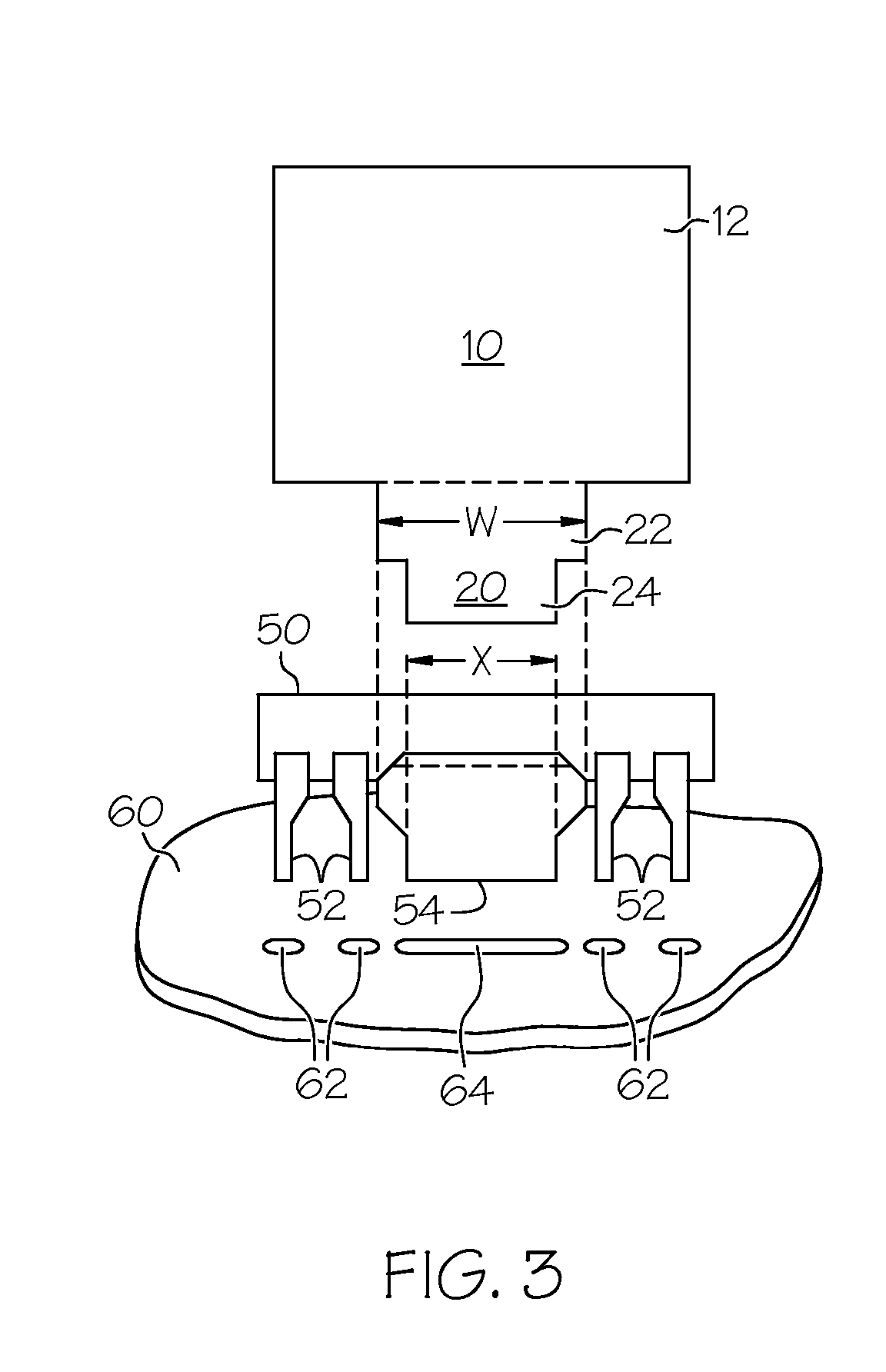Flexing chip heatsink
a heatsink and flexible technology, applied in the direction of cooling/ventilation/heating modification, semiconductor/solid-state device details, semiconductor devices, etc., can solve the problem of heatsink “breakage”, and achieve the effect of adequate heat dissipation, small footprint and high thermal heat conductivity
- Summary
- Abstract
- Description
- Claims
- Application Information
AI Technical Summary
Benefits of technology
Problems solved by technology
Method used
Image
Examples
Embodiment Construction
[0016] Integrated circuits (ICs) may be produced in a variety of packages. A common one is the dual-in-line package (or DIP) as shown in the prior art configurations of FIG. 3&FIG. 4, in which the IC chip 50 is encased in a rectangular box of dielectric material. Numerous metallic terminals or pins 52 are located along sides of the DIP package. Several of the pins 52 are connected to the IC chip 50 inside the box, thereby permitting electrical connections to be made to the circuit(s) located on the chip. Other pins 54 (usually those closest to the centrally located chip) are in physical contact with the metallic ground plane on the bottom of the chip 50 and are used to conduct heat from the chip to the external environment. A heat dissipator (or “heatsink”) 10 may be attached so as to contact the heat-conducting pins 54 and thereby conduct heat away from the IC chip 50. The heatsink 10 is usually attached prior to mounting the IC chip 50 in a printed circuit board (PCB) (not shown) ...
PUM
 Login to View More
Login to View More Abstract
Description
Claims
Application Information
 Login to View More
Login to View More - R&D
- Intellectual Property
- Life Sciences
- Materials
- Tech Scout
- Unparalleled Data Quality
- Higher Quality Content
- 60% Fewer Hallucinations
Browse by: Latest US Patents, China's latest patents, Technical Efficacy Thesaurus, Application Domain, Technology Topic, Popular Technical Reports.
© 2025 PatSnap. All rights reserved.Legal|Privacy policy|Modern Slavery Act Transparency Statement|Sitemap|About US| Contact US: help@patsnap.com



